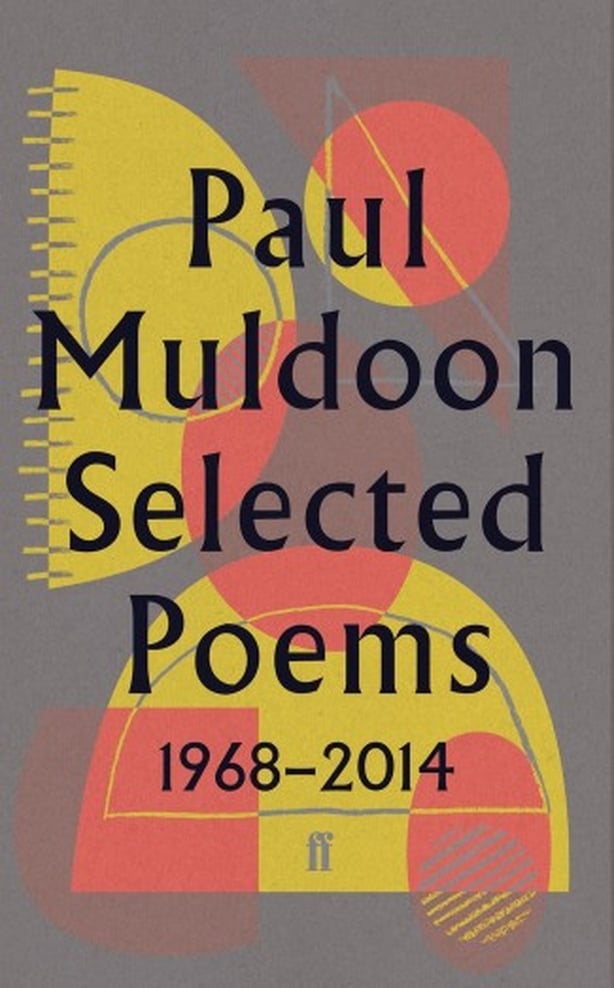You have to be on your toes with Paul Muldoon. His recent work makes raidings in all sorts of places and his natural element is eclecticism. Even a relatively ordinary usage might have to be looked up by the general reader, unfamiliar, say, with orientalism. This is the way poetry should be, wearing unfamiliar shirts, travelling far and wide.
Walking along - or indeed climbing the steps -of his exotic steppe, you might forget the Muldoon reach into popular song, through his lyric-writing for both Paul Brady and the late Warren Zevon. Muldoon is a man who has been covered by Bruce Springsteen, through the Zevon connection. He has also played in rock bands, notably the unit known as Racket.
But back to the sometimes arcane references that abound in the later work. Take`Corduroy road’, by no means the most obscure usage that Muldoon might employ. Associated with American Civil War times, a corduroy road, for the unenlightened, is the name for a road made of logs, set down perpendicular to the direction of the road itself. This is not the poet alluding to a rugged pair of trousers and making soem surreal connection.
The corduroy road in question appears in the intriguing long poem, The Humours of Hakone, which might just be a kind of murder mystery in verse, and the victim - if she is a victim - appears to be a young Japanese girl. The poet manages to riff on Mount Fuji, the Irish saint Columbanus and on the so-called `sticker-photo booth' (although there is no suggestion the good saint was ever in a sticker-photo booth.)
Where does the Pulitzer prize-winning Muldoon get the seed for a poem such as this, one finds oneself musing? Newspaper reports, random TV bulletins? The reader has a certain element of choice - resist the temptation to spend as much time checking the references as he or she might spend actually reading the Selected Poems.
In the course of The Humours of Hakone, the poet in almost obsessively focused forensic mode wonders whether the eye of the young female victim had been somehow implored to give up its vitreous potassium/ as a nun from a mendicant order
Might unthinkingly draw in her voluminous/ yellow robe to implore one for a little buckwheat.
Things are placed under a powerful lens in poems like The Humours of Hakone, you see everything in fine detail, even stuff that might seem extraneous to the investigation.
The poems chosen in this new Selected begin in 1973 with New Weather, the debut collection for Faber, with work also drawn from Mules (1977) Why Brownlee Left (1980), Quoof (1983), Meeting the British (1987), Madoc: A Mystery (1990), The Annals of Chile (1994), Hay (1998), Moy Sand and Gravel (2002), Horse Latitudes (2006) Maggot (2010), concluding with poems from One Thousand things Worth Knowing (2015).
The early work is less obtuse, direct in its tone of address, though glints of the future necromancer can be gleaned. The Mixed Marriage (from Mules) tells of his parents, his schoolteacher mother who had read one volume of Proust, his father who left school at eight or nine
He took up billhook and loy/ To win the ground he would never own.’
The poem Anseo (taken from Why Brownlee Left) radiates a chilling power, as the poet recalls the Irish word anseo, which the school pupil was expected to parrot at roll call to indicate attendance. In the poem, the sarcastic teacher is recalled jeering a young lad called Ward, with the nickname 'Ward-of Court.'
Years later, in adult life, the narrator poet meets Ward once again, now an IRA man `living in the open/In a secret camp ‘. The poem ends:
How every morning at parade/His volunteers would call back Anseo/ And raise their hands/As their names occurred.
That rueful note of vindication and impassioned triumph and the serendipitous symmetry of the word anseo repeated in an entirely different context make Anseo one the great Irish poems of the late 20th century.
Paddy Kehoe


